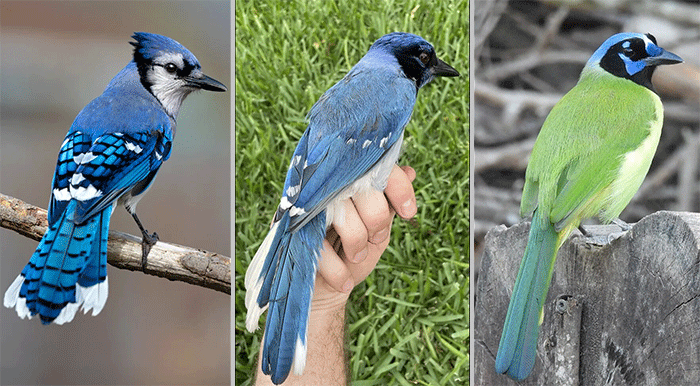First Blue Jay x Green Jay Hybrid Documented in Texas
First-ever confirmed intergeneric hybrid between these historically isolated corvids highlights the ecological surprises emerging under climate change

A hybrid nobody expected
In June 2023, birders in suburban San Antonio were startled by the sight of a jay that didn’t fit the book. Its plumage carried the bold blues of a Blue Jay (Cyanocitta cristata) yet bore the crown and bill-clicking behaviours of a Green Jay (Cyanocorax yncas). Now, scientists have confirmed the unthinkable: a natural hybrid between these two species, whose lineages diverged more than 7 million years ago.
While hybridisation in birds is not uncommon, it usually occurs between closely related species within the same genus. A confirmed intergeneric hybrid among New World jays is unprecedented in the wild. Researchers describe this case as an evolutionary anomaly made possible by the shifting ranges of temperate and tropical species.
From backyard to genome
The bird was first noticed by a homeowner and reported on the TEXBIRDS Facebook group. Captured briefly for study, the jay revealed a mix of characters: a Green Jay-like crest and facial markings combined with the tail and wing pattern of a Blue Jay.
Genomic analysis provided the definitive answer. Mitochondrial DNA traced the maternal lineage to a Green Jay, while nuclear DNA showed nearly equal contributions from both species, confirming the bird as a first-generation hybrid. Remarkably, its song combined Blue Jay squawks with the rattling calls of Green Jays.
Climate and feeders bring birds together
For most of history, the Blue Jay’s range extended across temperate North America, while the Green Jay was confined to Central America and the southern tip of Texas. Their ranges were once separated by nearly 200 km, making encounters during breeding impossible.
But warming winters have allowed Green Jays to expand northwards, while Blue Jays have pushed south and west, following suburban gardens and bird feeders. Citizen science records from eBird confirm an increasing number of checklists in Texas that now feature both species together. Climate models project that this overlap zone will continue to expand northward in the coming decades.
Survival and significance
The hybrid jay was not a fleeting anomaly. After disappearing from public view for nearly two years, it was resighted in 2025 at the same suburban property, proving it had survived into adulthood. Whether such hybrids are fertile remains unknown, but even isolated cases show how climate change is rewriting the rules of species boundaries.
As the authors note, this discovery underscores the rise of “no-analog” communities, where species with no shared evolutionary history are thrown together by human-driven change. Documenting these surprising outcomes is vital – not only for understanding biodiversity but also because birds like jays are keystone species in ecosystems and carriers of zoonotic disease potential.
A glimpse of tomorrow’s ecology
This case of a Green Jay × Blue Jay hybrid illustrates the unpredictable consequences of global change. Once considered impossible, such unions may become increasingly common as species shift ranges and mingle in novel ways. For ecologists and birders alike, the message is clear: expect the unexpected.
September 2025
Share this story







